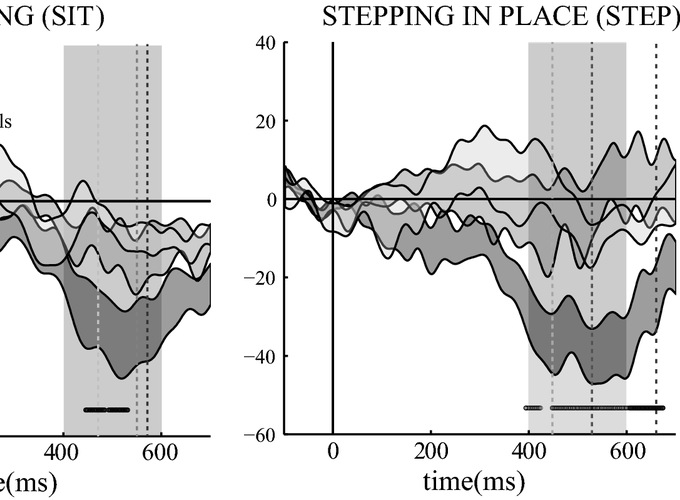Neurophysiological correlates of dual tasking in people with Parkinson's disease and freezing of gait.
Abstract
Freezing of gait in people with Parkinson’s disease (PwP) is associated with executive dysfunction and motor preparation deficits. We have recently shown that electrophysiological markers of motor preparation, rather than decision-making, differentiate PwP with freezing of gait (FOG +) and without (FOG -) while sitting. To examine the effect of locomotion on these results, we measured behavioural and electrophysiological responses in PwP with and without FOG during a target response time task while sitting (single-task) and stepping-in-place (dual-task). Behavioural and electroencephalographic data were acquired from 18 PwP (eight FOG +) and seven young controls performing the task while sitting and stepping-in-place. FOG + had slower response times while stepping compared with sitting. However, response times were significantly faster while stepping compared with sitting for controls. Electrophysiological responses showed no difference in decision-making potentials (centroparietal positivity) between groups or conditions but there were differences in neurophysiological markers of response inhibition (N2) and motor preparation (lateralized readiness potential, LRP) in FOG + while performing a dual-task. This suggests that the addition of a second complex motor task (stepping-in-place) impacts automatic allocation of resources in FOG +, resulting in delayed response times. The impact of locomotion on the generation of the N2 and LRP potentials, particularly in freezers, indirectly implies that these functions compete with locomotion for resources. In the setting of multiple complex tasks or cognitive impairment, severe motor dysfunction may result, leading to freezing of gait.
